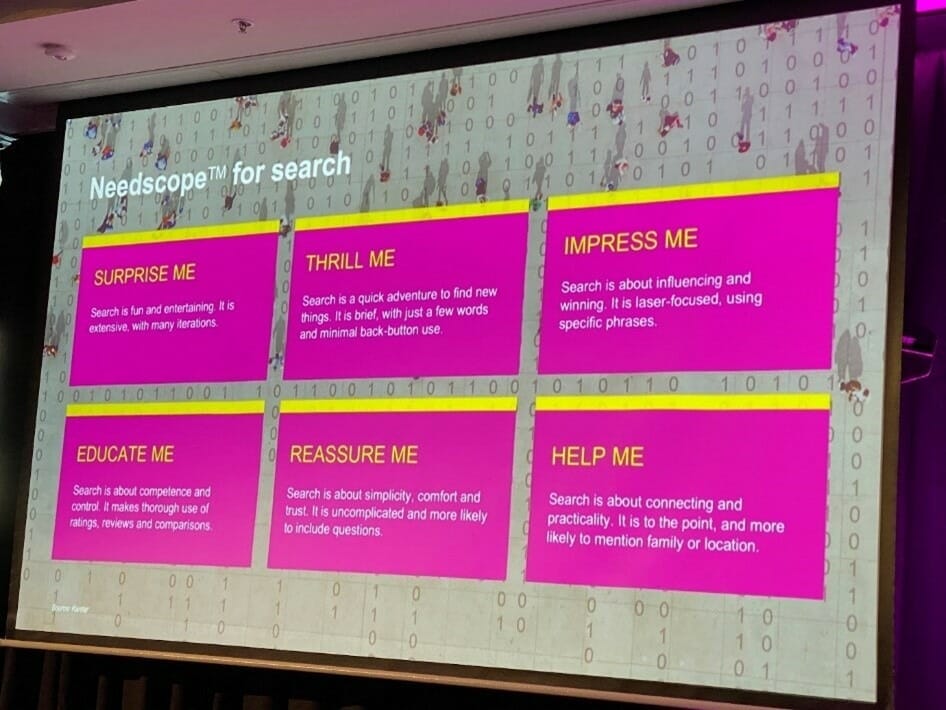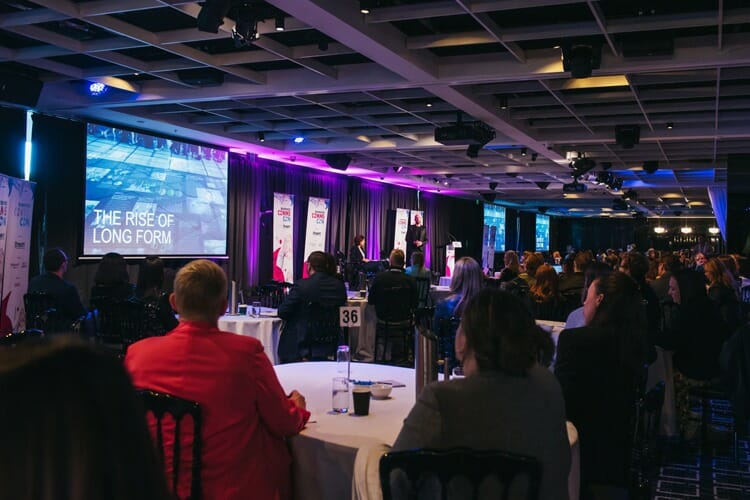Last month I attended my first industry conference in ages, and in person. It was great. The networking, the content, the coffee, the giveaways (ha-ha – who doesn’t love a new notebook and pen).
The conference was CommsCon by Mumbrella, aptly titled – Reuniting the PR & Communications Industry. They always put on a great conference, it did feel like a reunification, and it was one of the last sessions at the end of the day that I wanted to share some key takeaways.
Richard Brett and Bridget Jung from Ogilvy PR presented their recent futures insight report – The Future of Content – Trends Shaping the Future of Brand Storytelling. It takes an in-depth look at the way we find, consume, make and share content in Australia and around the world.
Content is our thing too and it’s important to see where trends are shifting because while storytelling will always be relevant – how we tell the stories and how we stand out, stay fresh and new is critical. And while some of these ideas may seem like they have a young and or consumer skew – there is still value to be across it.
They summed it up into these key areas below. If you’re in a rush you can be across the trends in a minute or if you have time, I cover some in more detail further down. All credit goes to the Ogilvy guys as the research and insights are theirs.
The eight key trends were:
- Technology driven marketing – hyper customised to an individual based on their desires and needs.
- Short ‘’snackable’’ content for short attention spans is moving out of the way for the rise of long content.
- Content based on insights gathered from what people are searching for to ensure it hits the mark.
- Recalling the past more fondly than the present and remembering things better than they were.
- Basically, you don’t need “all that jazz”.
- Content as therapy – read Al’s blog to find out more from one who loves that kind of stuff.
- Distinctly human connection in a digital world. Like asking Google questions as if it were a person? Or watching someone studying for 12 hours on YouTube – it’s called Gongbang – you can find out more below.
- Content that organically evolves, gets better and transforms as it is passed along.
So, while some of these ideas may seem like they have a young and or consumer skew – there is still value for us as B2B marketers working in some of the “more grounded” industries.
Long live long form
Long form content presents a great opportunity for us to go deep and narrow on our subject matter and is the counter trend of the snackable and short content focus of recent years. Short content was developed in response to perceived short attention spans and mechanics of how content was being served up in social media streams. But longform is back on the rise and technology like parallax scrolling is helping to provide the dynamic environment our long form content can live in on the web. According to EBPearls parallax scrolling creates the appearance of multiple layers of content that moves across the screen at different speeds when the user scrolls up or down. When executed well, it creates an amazing design that produces the feeling of movement and depth. You may have come across this on ABC – they often use parallax scrolling for more in depth topics like this climate change article. Or Microsoft Story Labs where they have a dedicated space for videos, longform articles and interviews, all are the ‘stories’ of Microsoft employees from every department in the company, while subtly showcasing Microsoft products and services at the same time.
Pass it on
Readers, viewers and listeners are taking content into their own hands and transforming it anew. In the ultimate “pass it on’’ global collaboration, an unknown Scottish postman called Nathan Evans has racked up millions of views and is responsible for what is being called “Sea Shanty TikTok” where his song has been picked up and added to by people across the globe. The lesson for us is to throw the keys to our audience and let them drive, inject joy into content where you can and resist having to be the centre of your story – be the customer first.
Search the need states

At its core, search is driven by needs. And when people search for a need that your brand can fulfil, you need to deliver information that will speak to their rational and emotional drivers. Online searches provide highly valuable insights for marketers into how customers want their needs met.
Work by Kantar’s NeedScopeTM has shown that recognising the emotional needs that underlie finding what we want can be very effective. They are surprise me, thrill me, impress me, educate me, reassure me and help me. Deliver to these needs along with your functional content and you now understand more about how people search, helping you to deliver better content.
So what is Gongbang?
Ha-ha – I thought you might scroll down here to find out. Originating in South Korea, the term gongbang is a combination of “gongbu” and “bangsong”, which translates to “study broadcast.” South Korean students read, take notes, and do online research or exercises on camera. For up to 12 hours at a time. And people watch. The idea is that it creates and online community or virtual study group. True digital humanity. You can watch it here.
If you need help with content that will impress, educate, inspire and more – drop us a line.
Sue Hardman

